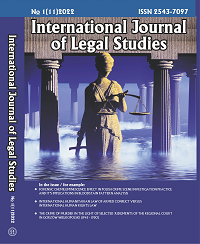AIRPORT SECURITY – INTERNATIONAL AND POLISH PREVENTIVE
AND RESPONSE TO TERRORIST THREAT
AIRPORT SECURITY – INTERNATIONAL AND POLISH PREVENTIVE
AND RESPONSE TO TERRORIST THREAT
Author(s): Julia Wioletta Tocicka, Ewa JakubiakSubject(s): Security and defense
Published by: Międzynarodowy Instytut Innowacji "Nauka - Edukacja - Rozwój"
Keywords: airports; terrorist threats; safety management system (SMS); acceptable level of safety performance (AloSP); safety risk;
Summary/Abstract: The rise of new technologies, free circulation of goods, services and people, as well as the transformations that have been embedded in civil aviation, have greatly contributed to the need to implement and continuously improve the safety management system (SMS). The process of managing airport safety affects the health and life of many people and requires extensive mate- rial expenditure. It involves both ensuring the so-called acceptable level of safety performance (AloSP) of aircrafts, airport infrastructure and passengers in every phase of flight, airport rescue, as well as protection against unlawful interference. It is assumed that the introduction of the safety management process at airports will foster: 1) enhancing the safety culture, 2) establishing a transparent and documented approachto achieving safe operations, 3) introducing changes in a controlled manner, with continuous improvement of the safety program/system, thus helping to optimise the resources required in the process of implementing changes, 4) a better under- standing of the interfaces and relationships related to airport security, 5) earlier detection of threats to airport civil security, 6) improving the ability of the state/civil aviation entity to collect safety data for the purpose of conducting safety analysis, 7) streamlining safety-related commu- nication, 8) possible financial savings (obtaining discounts on insurance premiums and/or lowering employee insurance premiums based on the outturns of the safety management system, 9) cutting the costs of operations by highlighting inefficiencies in the existing processes and systems, 10) avoiding costs related to accidents and incidents by means of proactive hazard identification and safety risk management (SRM).
Journal: International Journal of Legal Studies (IJOLS)
- Issue Year: 11/2022
- Issue No: 1
- Page Range: 61-81
- Page Count: 21
- Language: English

